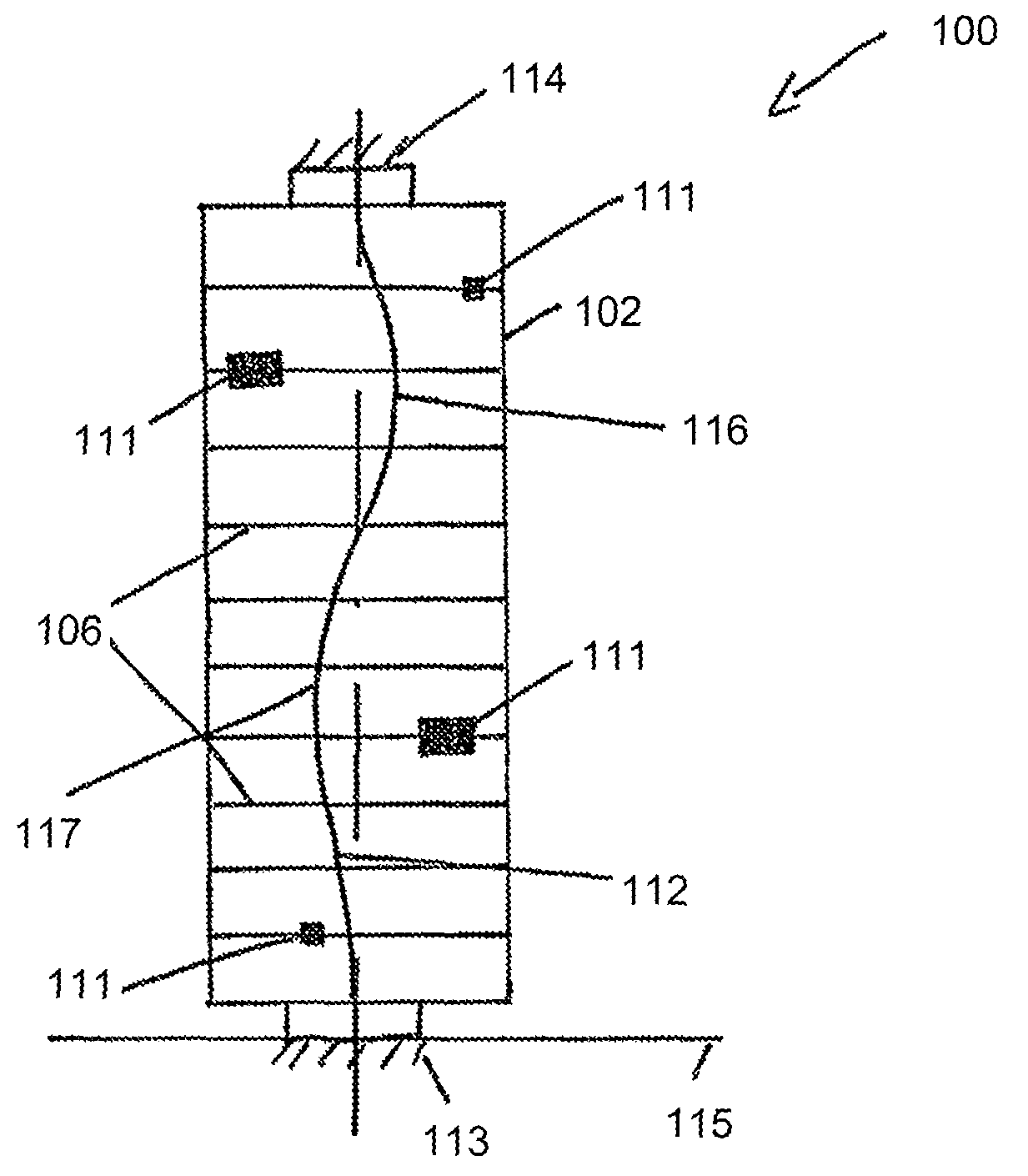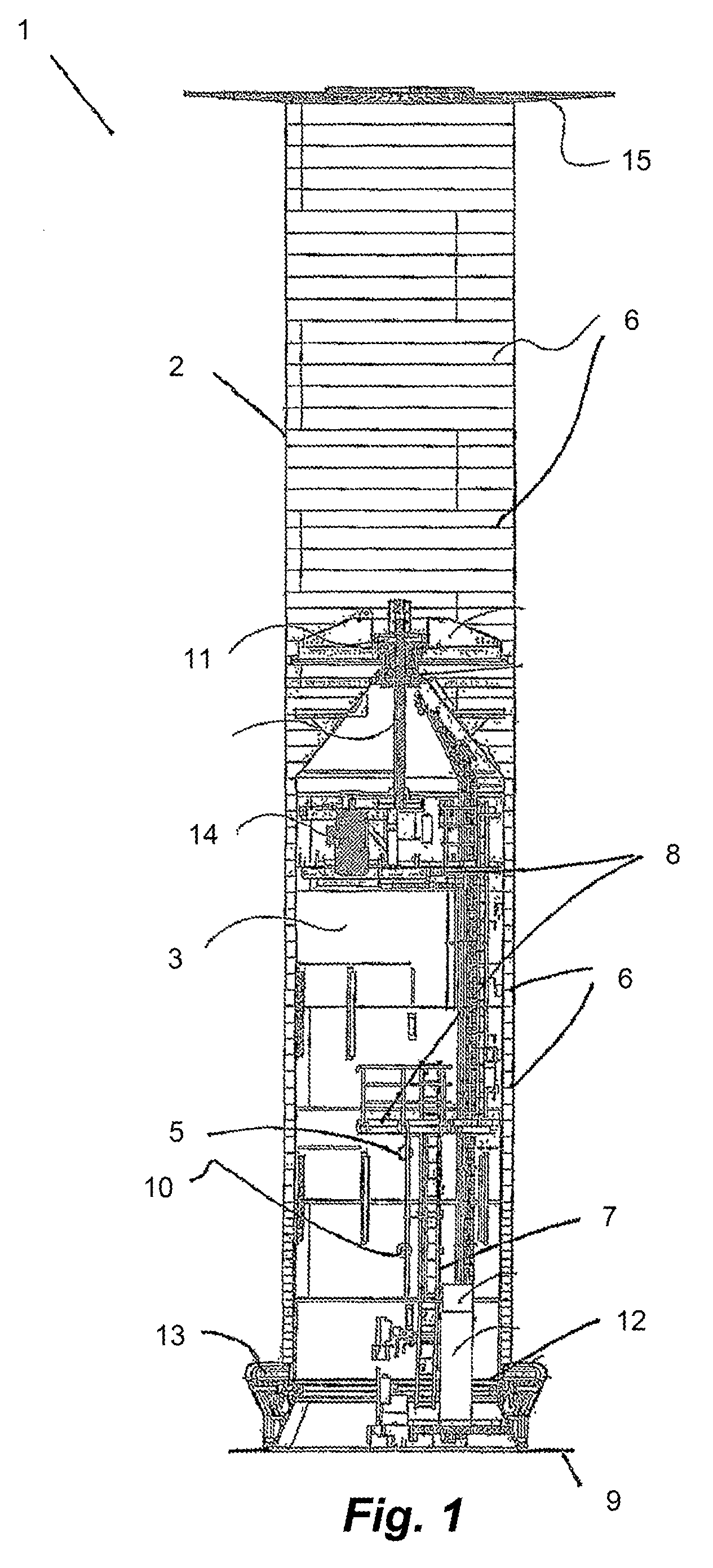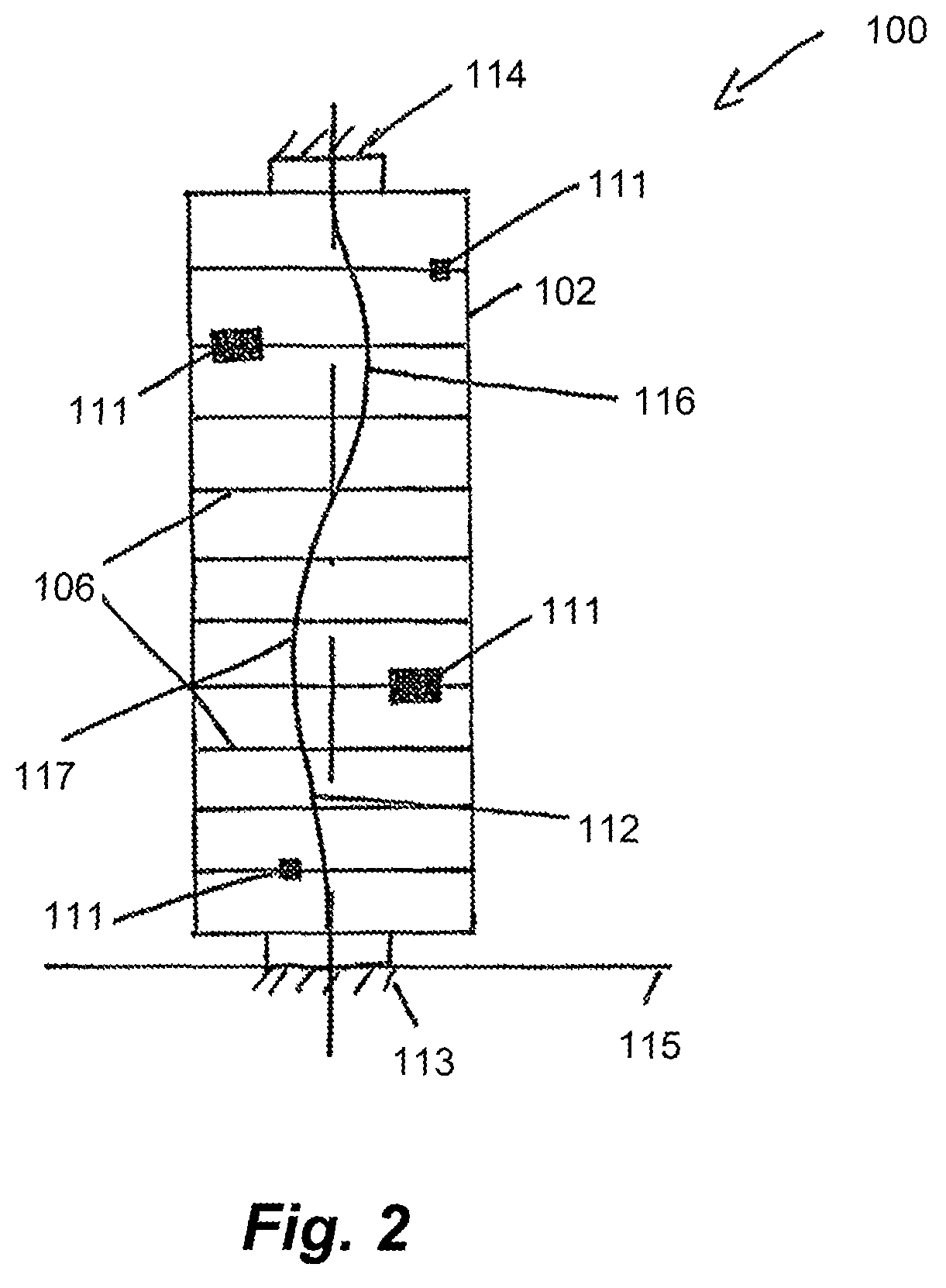Magnus rotor with balancing weights and method for balancing a body of revolution
a rotor and revolution technology, applied in the field of magnus rotors, can solve the problems of increasing the wear or even destruction of the bearings, reducing the stability of the rotor, and reducing the efficiency of the rotor, so as to achieve the effect of reducing the weight of the body
- Summary
- Abstract
- Description
- Claims
- Application Information
AI Technical Summary
Benefits of technology
Problems solved by technology
Method used
Image
Examples
Embodiment Construction
[0040]Referring to FIG. 1 the Magnus rotor 1 includes a rotary body 2 which is adapted to rotate and which is rotationally symmetrical relative to an axis of rotation and which is supported by way of a carrier 3. The rotary body 2 is a cylindrical hollow body which stands perpendicularly on a plane 9 which is part of a ship—hereinafter referred to as the ship's plane. Shown on the inside of the rotary body 2 are ribs 6 serving as stiffening means for stiffening the rotary body 2. They extend in the peripheral direction of the rotary body 2. In addition the ribs 6 are used for receiving balancing weights. For that purpose the ribs are provided with recesses, holes and / or projections at regular spacings in the peripheral direction. It is possible to use screwthreaded pins for connecting the balancing weights to the ribs 6. The ribs 6 extend over the entire periphery in the axial direction with respect to the axis of rotation at a predetermined spacing relative to each other. In that c...
PUM
| Property | Measurement | Unit |
|---|---|---|
| height | aaaaa | aaaaa |
| angle | aaaaa | aaaaa |
| angle | aaaaa | aaaaa |
Abstract
Description
Claims
Application Information
 Login to View More
Login to View More - R&D
- Intellectual Property
- Life Sciences
- Materials
- Tech Scout
- Unparalleled Data Quality
- Higher Quality Content
- 60% Fewer Hallucinations
Browse by: Latest US Patents, China's latest patents, Technical Efficacy Thesaurus, Application Domain, Technology Topic, Popular Technical Reports.
© 2025 PatSnap. All rights reserved.Legal|Privacy policy|Modern Slavery Act Transparency Statement|Sitemap|About US| Contact US: help@patsnap.com



